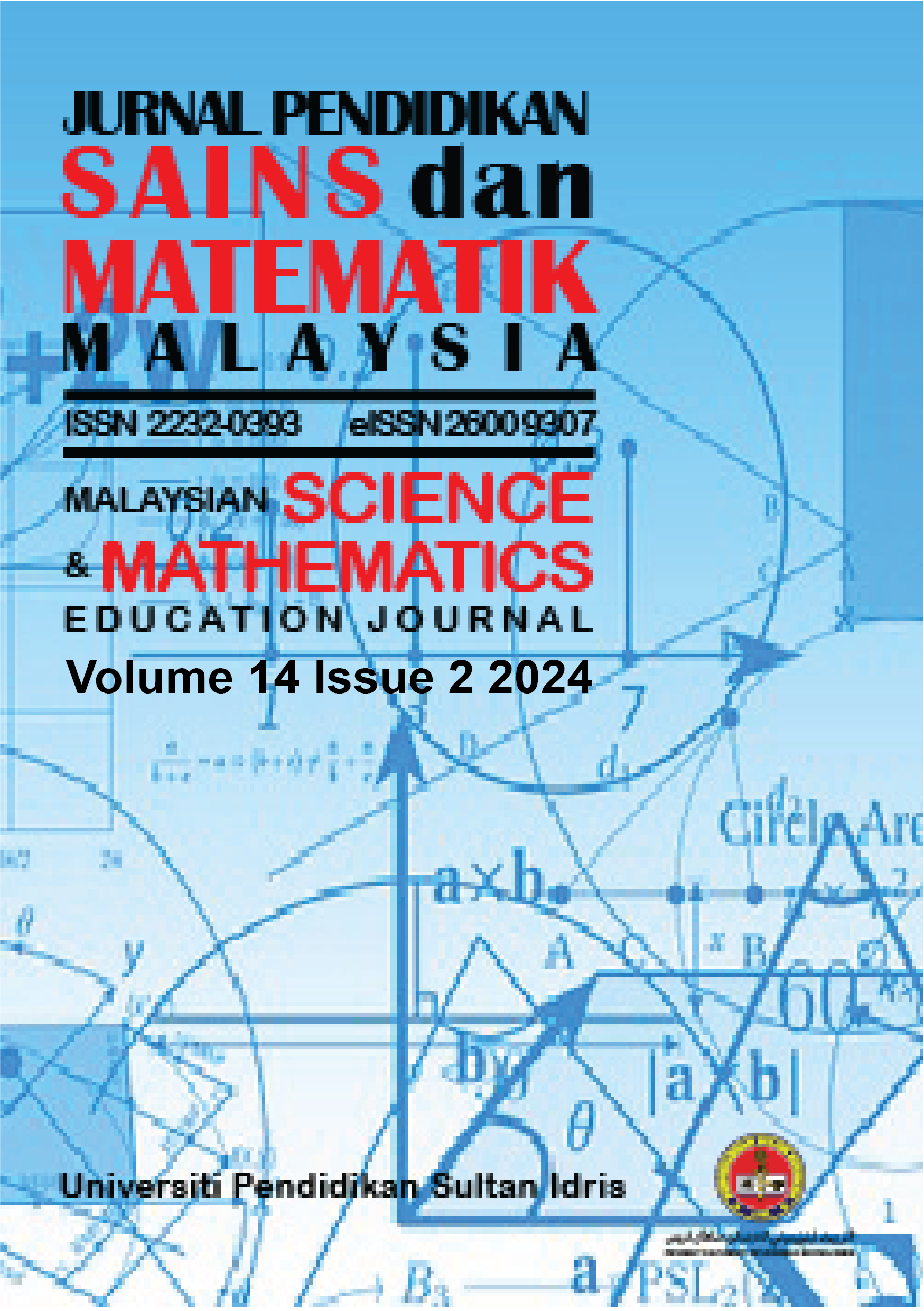Visual Analysis of Project-based Learning Research Based on Citespace
DOI:
https://doi.org/10.37134/jpsmm.vol14.2.3.2024Keywords:
project-based learning, education, citepace, trend, bibliometricAbstract
This study used Citespace 6.3. R1 visualization analysis software as the research instrument and Web of Science core collection as the data source to screen and visualize the relevant literature on project-based learning from 2019 to 2022. Research indicates that the number of articles on project-based learning published in 2022 is the most in 5 years. And then it shows a downward trend. China and the United States are the two countries with the most published literature on project-based learning. Computer science, engineering education, and virtual reality are disciplines closely related to project-based learning. Dependent variables as critical thinking, collaborative learning, team learning appeared more frequently in the articles.
Downloads
References
Almulla, M. A. (2020). The Effectiveness of the Project-Based Learning (PBL) Approach as a Way to Engage Students in Learning. SAGE Open, 10(3). https://doi.org/10.1177/2158244020938702
Bahari, F. A. Z., & Saleh, S. (2023). Content Validation Procedure: Development of Problem-solving Skills Test (PSST): Prosedur Pengesahan Kandungan: Pembangunan Ujian Kemahiran Penyelesaian Masalah (PSST). Jurnal Pendidikan Sains Dan Matematik Malaysia, 13(1), 1–9.
Baskaran, V. L., & Abdullah, N. (2022). Authentic Learning Approach in Science Education. Jurnal Pendidikan Sains Dan Matematik Malaysia, 12(1), 54–64.
Boudersa, N., & Hamada, H. (2015). Student-Centered Teaching Practices: Focus on The Project-Based Model to Teaching in the Algerian High-School Contexts. Arab World English Journal, August, 84–91.
Chen, C. (2017). Science Mapping: A Systematic Review of the Literature. Journal of Data and Information Science, 2(2), 1–40. https://doi.org/10.1515/jdis-2017-0006
Chen, Y., Chen, C., Hu, Z., & Wang, X. (2014). Principles and applications of analyzing a citation space.
Conley, D. T. (2007). Redefining college readiness. Educational Policy Improvement Center (NJ1).
Genc, M. (2015). The project-based learning approach in environmental education. International Research in Geographical and Environmental Education, 24(2), 105–117. https://doi.org/10.1080/10382046.2014.993169
Hall, A., & Miro, D. (2016). A Study of Student Engagement in Project-Based Learning Across Multiple Approaches to STEM Education Programs. School Science and Mathematics, 116(6), 310–319. https://doi.org/10.1111/ssm.12182
Harasim, L. (2018). Constructivist Learning Theory. Learning Theory and Online Technologies, October, 61–79. https://doi.org/10.4324/9781315716831-5
Kiswanto, A. (2017). The Effect Of Learning Methods And The Ability Of Students Think Logically To The Learning Outcomes On Natural Sciences Of Grade Iv`S Student. 118, 1040–1046. https://doi.org/10.2991/icset-17.2017.168
Kokotsaki, D., Menzies, V., & Wiggins, A. (2016). Project-based learning: A review of the literature. Improving Schools, 19(3), 267–277. https://doi.org/10.1177/1365480216659733
Pucher, R., & Lehner, M. (2011). Project Based Learning in Computer Science - A review of more than 500 projects. Procedia - Social and Behavioral Sciences, 29, 1561–1566. https://doi.org/10.1016/j.sbspro.2011.11.398
Uziak, J. (2016). A project-based learning approach in an engineering curriculum. Global Journal of Engineering Education, 18(2), 119–123.
Virtue, E. E., & Hinnant-Crawford, B. N. (2019). “We’re doing things that are meaningful”: Student Perspectives of Project-based Learning Across the Disciplines. Interdisciplinary Journal of Problem-Based Learning, 13(2), 8–30.
Warr, M., & West, R. E. (2020). Bridging academic disciplines with interdisciplinary project-based learning: Challenges and opportunities. Interdisciplinary Journal of Problem-Based Learning, 14(1), 1–23. https://doi.org/10.14434/ijpbl.v14i1.285901
Downloads
Published
How to Cite
Issue
Section
License
Copyright (c) 2024 Duo Haijian, Nor Asniza Ishak

This work is licensed under a Creative Commons Attribution-NonCommercial-ShareAlike 4.0 International License.





